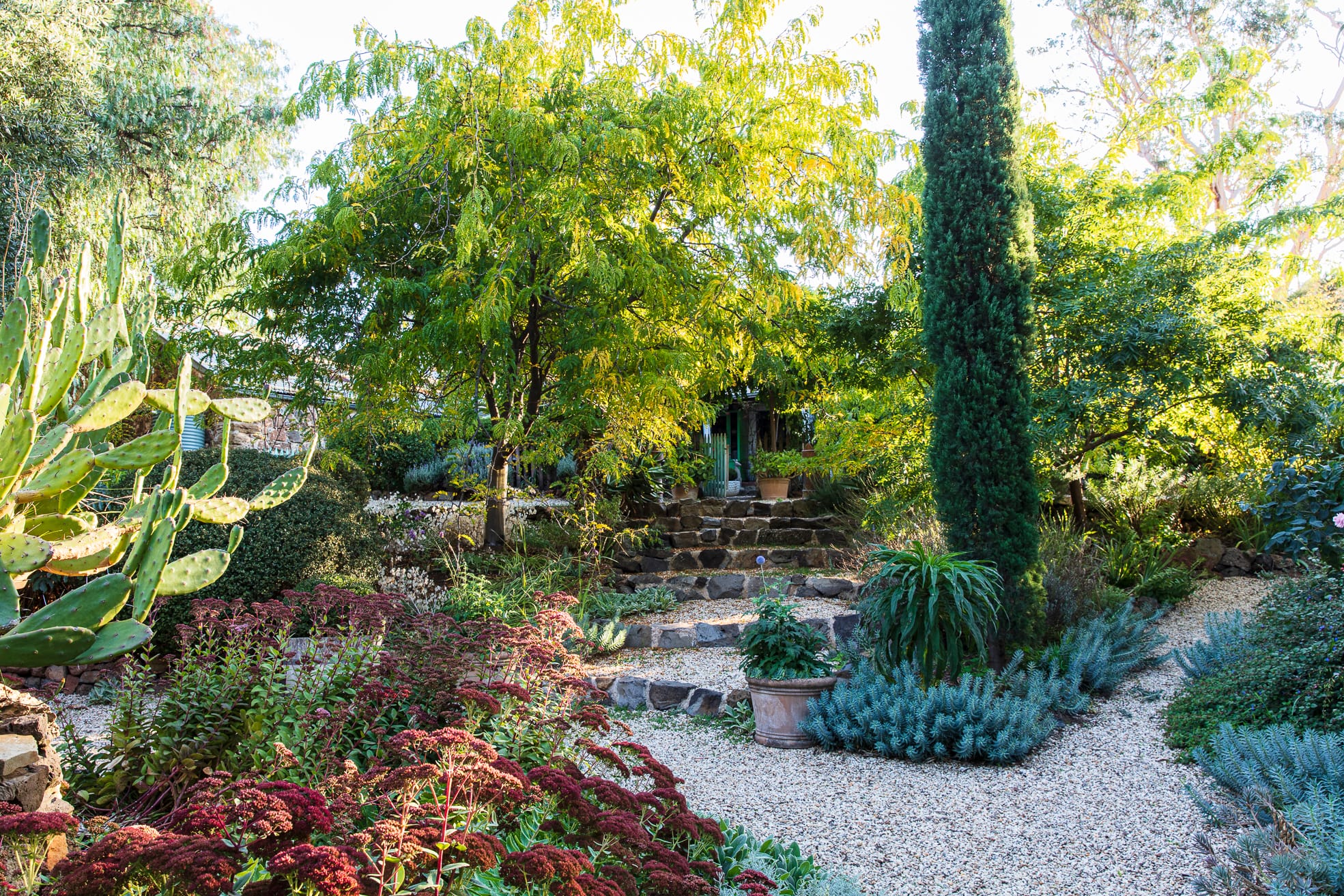
Gardening in a drought-prone place of temperature extremes is not for the faint-hearted, but Jeremy Valentine loves a challenge. Here’s the fourth instalment of In the Weeds, his monthly newsletter for Galah.

What happens when a garden grows too big? Not in the outward sense, for every gardener with space at their disposal is guilty of pushing out the boundaries. But what happens when a garden grows up?
Once small trees now create vast meshing umbrellas of green. Where there was once sun and sky there's now deep shade, and the previously position-perfect plants beneath them are increasingly faced with exactly the opposite of what they prefer.
This often unforeseen conundrum is happening to us presently, and it's thrown the balance of all that we had achieved in the garden’s infancy off balance.
Perhaps a garden is nicest at the halfway point, when satisfying progress abounds and the joy of an optimistic end result is still firmly on the horizon.
I wondered this just the other day, rake in hand, imagining what the next move might be for those older, more established parts of the garden.
One such part is the "sunken garden". It's really just a natural hollow in the landscape where the river flats create a nape in the shoulder of the ridge. The descent to the bottom is by way of a broad set of seven steps I recreated in stone (during one of the Covid lockdowns), while the other is a steep path at the foot of the old wattle-and-daub stables, an early structure that started life as a tiny house when the gold rush was in full swing.
The trees here have grown exponentially. There are two draping lime Gleditsia either side of the steps, an earnest olive with silver-backed leaves like the twist-and-turn of a thousand fish, and an Azara microphylla that has grown much larger than expected.
Also known as a boxleaf azara or vanilla tree, it has a slightly ghoulish habit of twisty grey branches as matte as a set of felt antlers, and stippled with tiny, secretive, glossy green leaves. Every spring, its visually insignificant fuzz of yellow blooms is well compensated by its intoxicating scent of chocolate and vanilla. How incredible the whole garden smells then under its confectionery spell. It's these trees, among others, that have grown up large, changing this part of the garden's dynamic forever.
We've lost plants to the deep shade. Some have become leggy and lank, begging for the sun. The Melianthus major is no longer quite so major, and the rusty grabs of chrysanthemum 'Monza Red' have given up the will to bloom, protesting with sallow underwhelming stalks. And there are clear, mystery-spoiling views under the raised canopy of the trees, where previously only hidden glimpses beckoned.
It is lovely in a different way, yes, but somehow I miss the way it was when everything seemed to thrive together in unison.
Little by little, corner by corner, we are gradually introducing more appropriate plants that can cope with all this dry shade we now experience during summer.
Plants and gardens have long relationships, as people do. Everyone evolves over the years. Conditions change, interests ebb and flow, and the seasons of life march on endlessly. But true friends remain steadfast, accommodating all the tweaks and quirks along the way.
And on that thought, I'll grab my tools and embrace these fascinating changes as they come to the fore. Friends and gardens united.

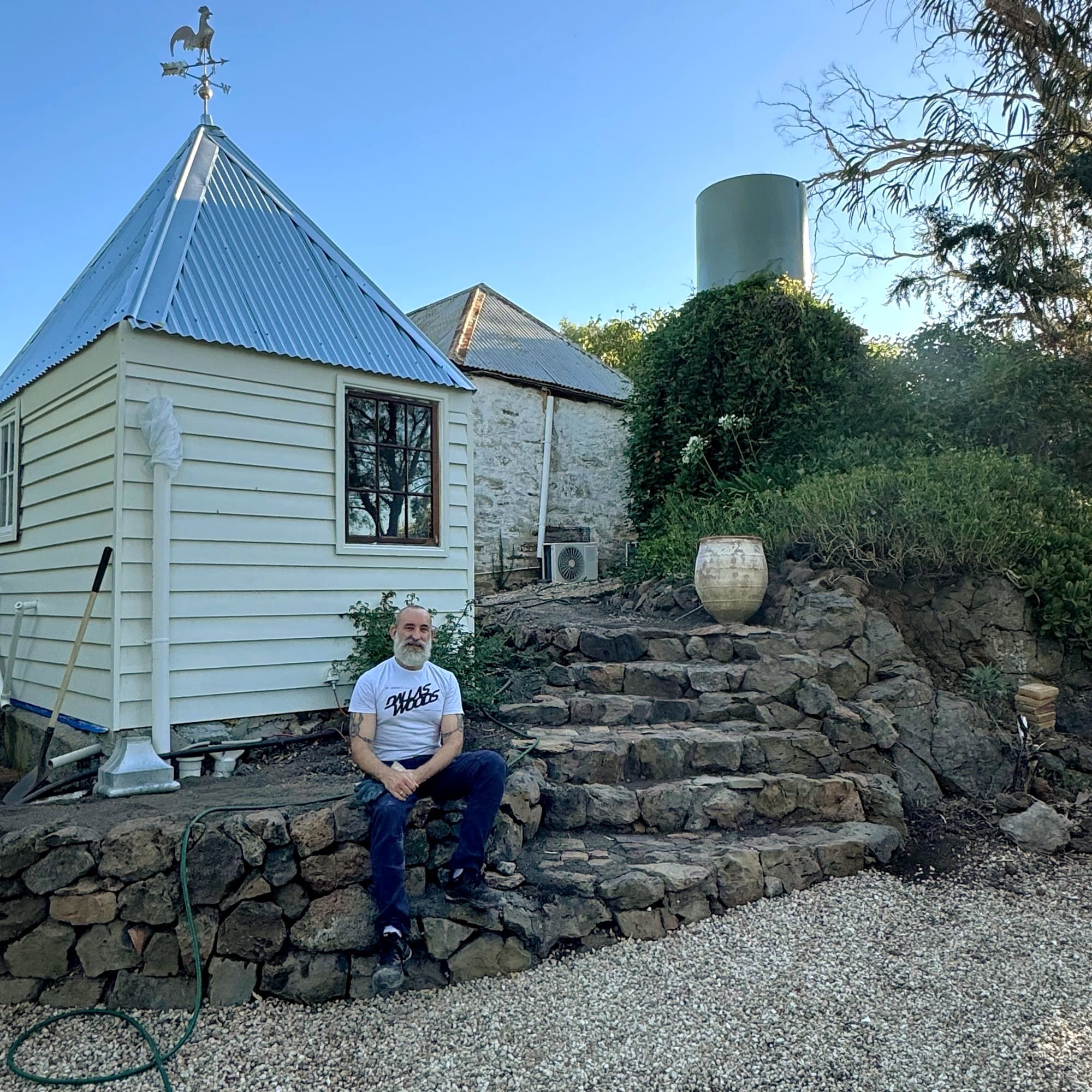
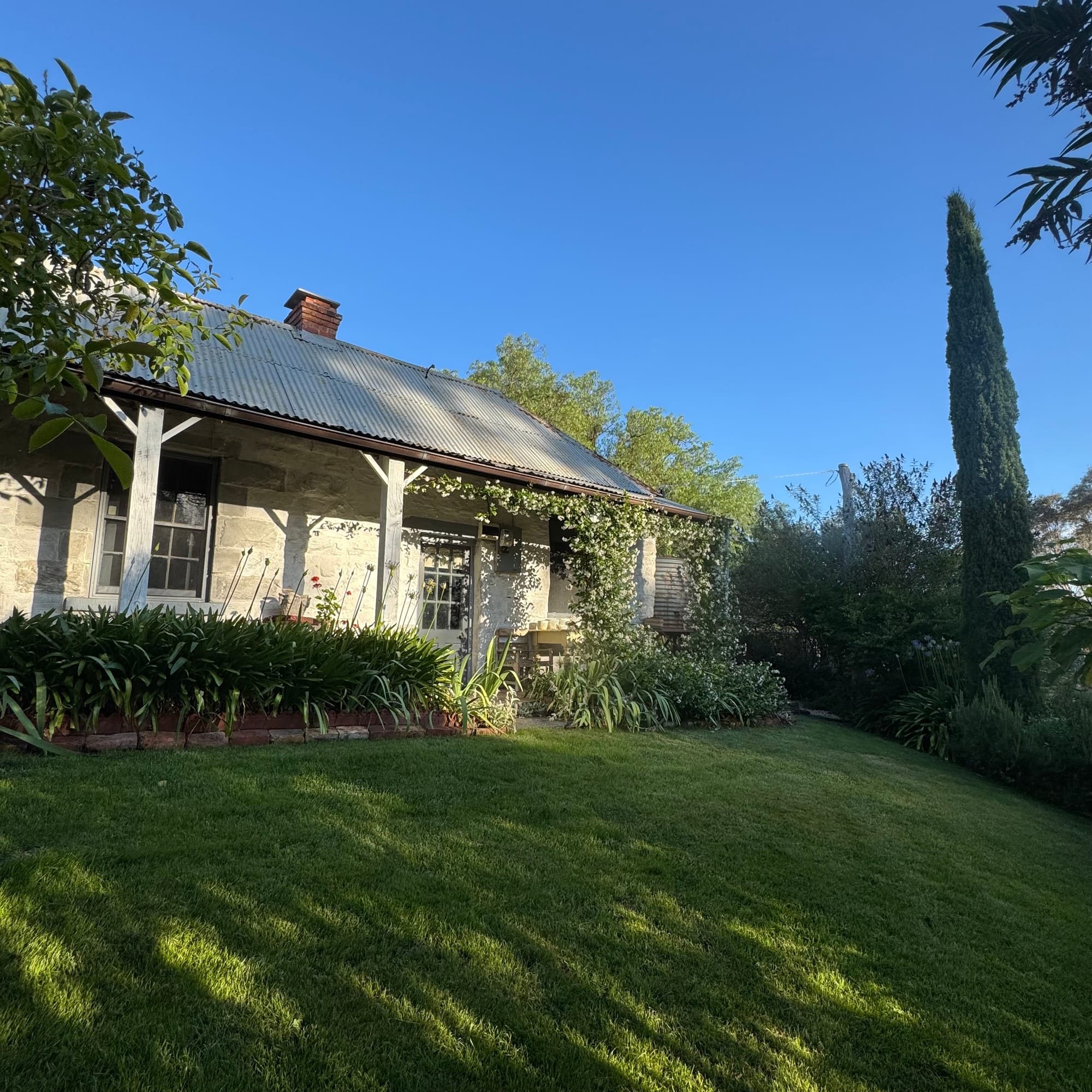
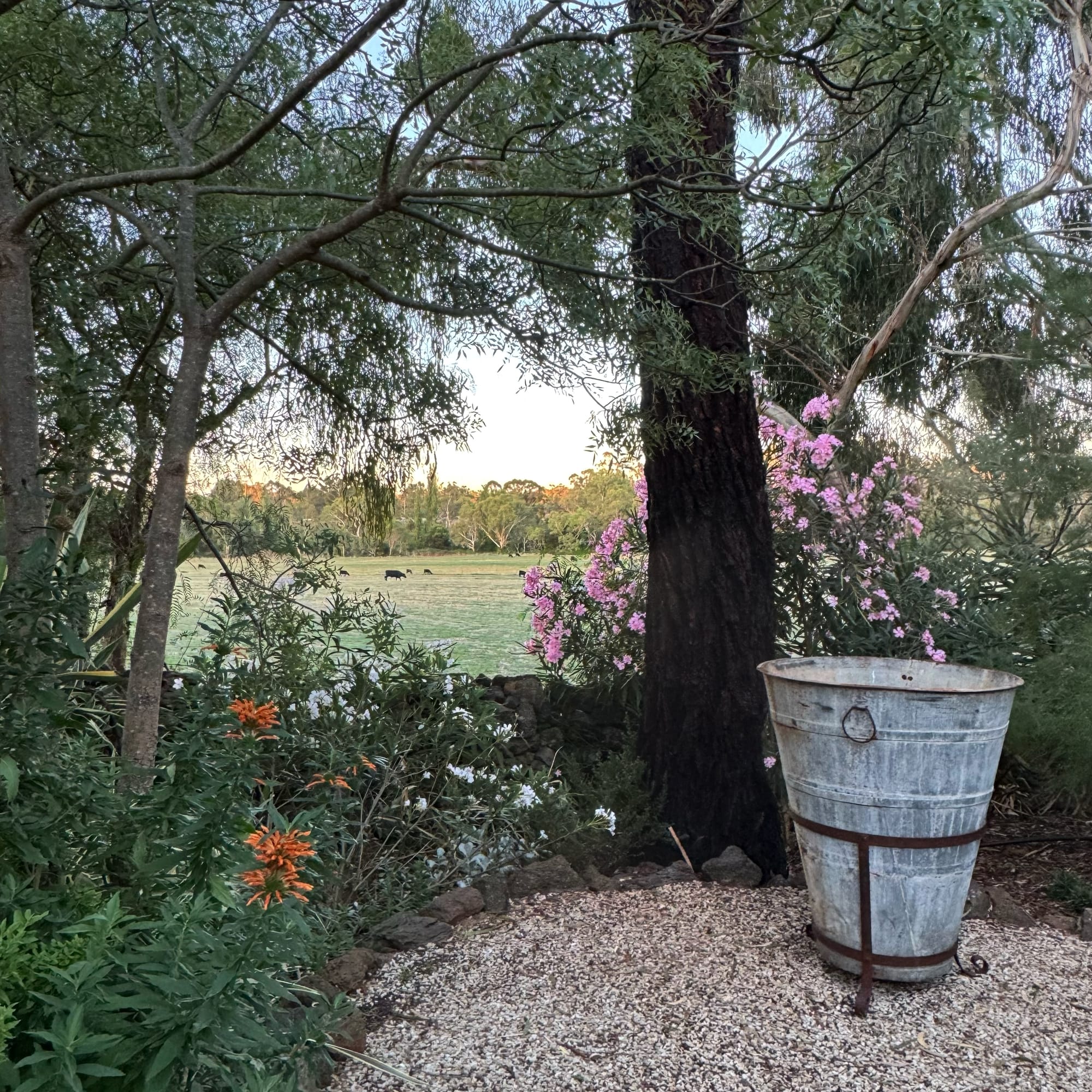
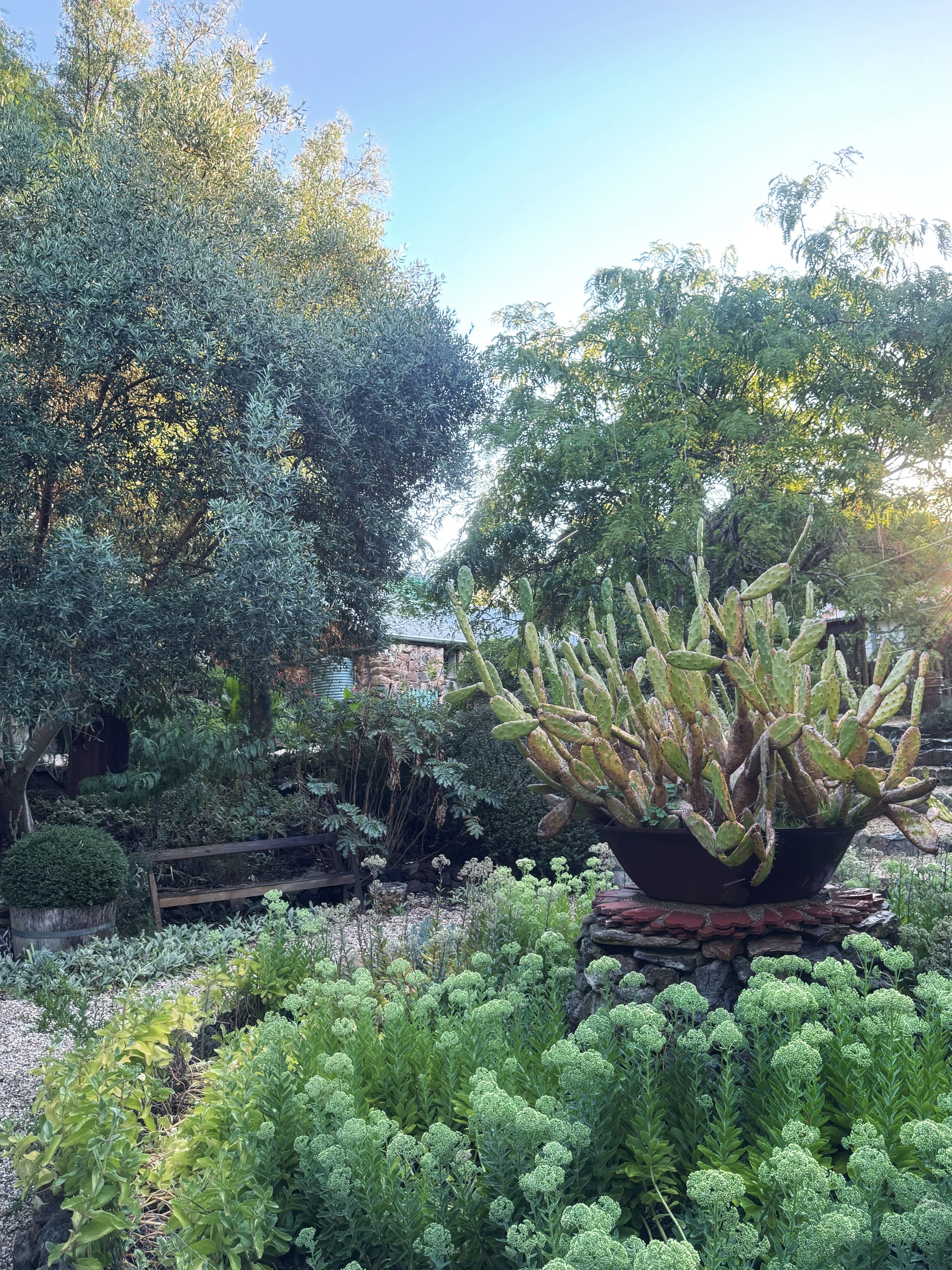
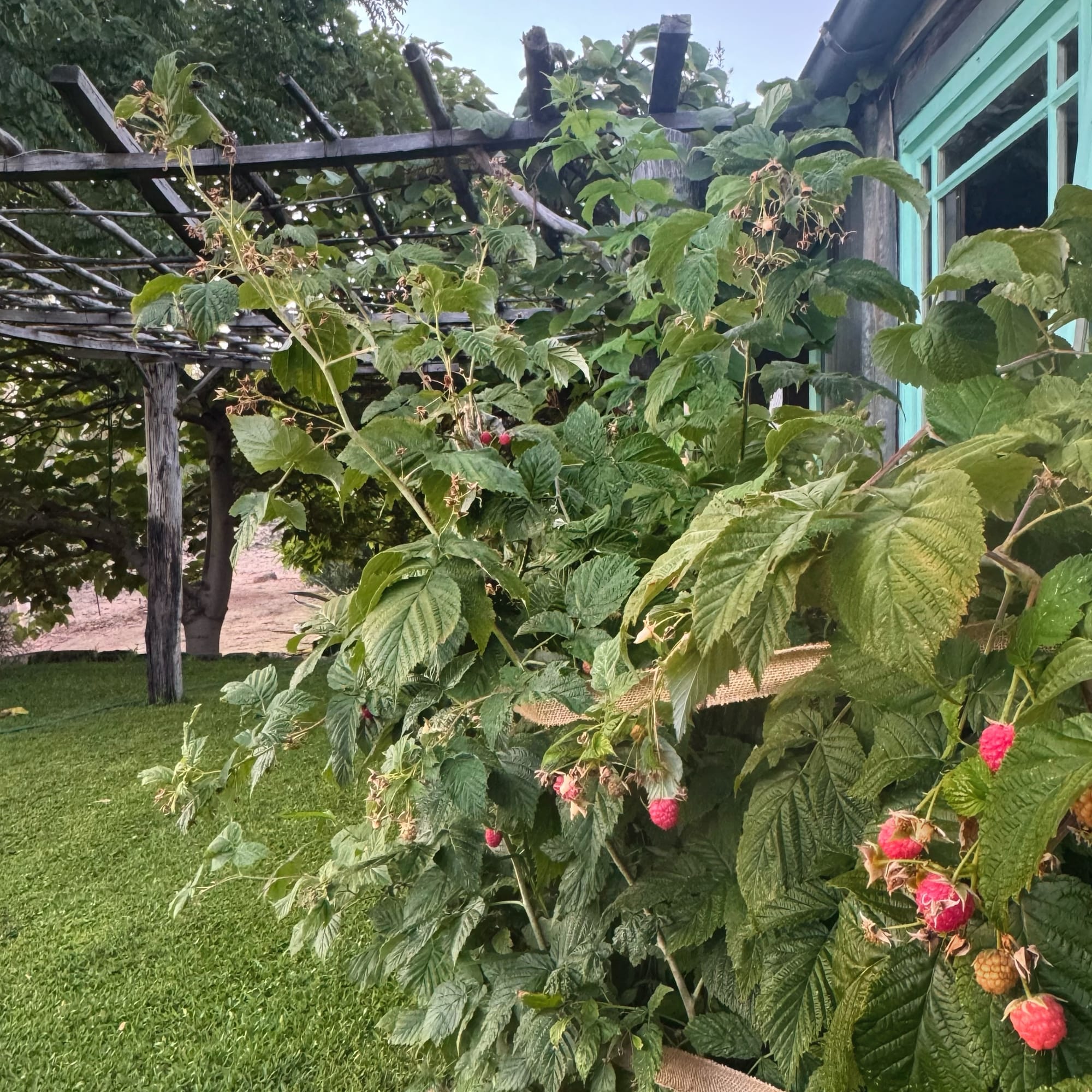
Jeremy Valentine's February snapshots: Recent rains have refreshed the garden after many dry weeks/ An old olive bucket in a quiet spot where the trees have grown tall, allowing a clear view down to the river flats beyond/The pale green buds of Sedum 'Autumn Joy' in the sunken garden/What’s left of the frequently raided raspberries down at the Milking Sheds.
Catch up on Jeremy's previous stories here or find him on Instagram at @thestonescentralvictoria